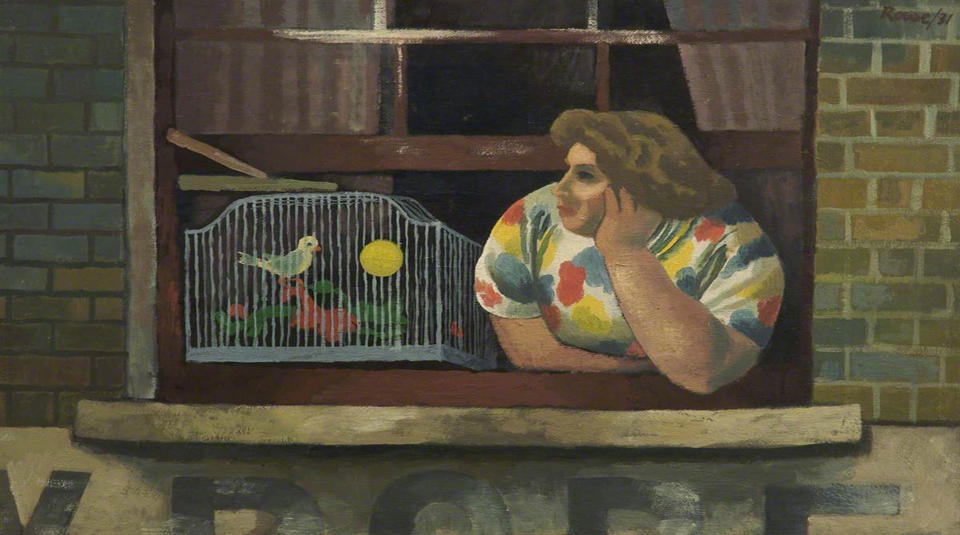
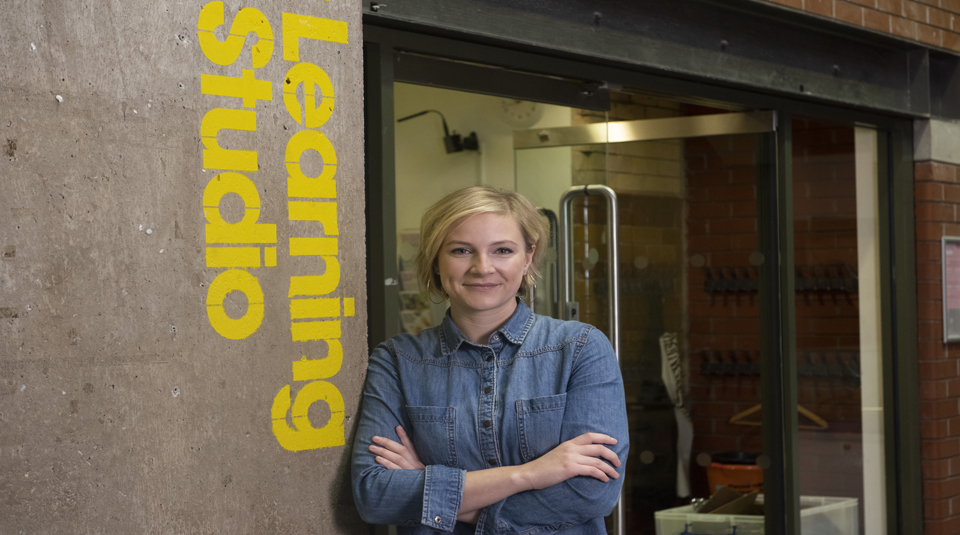
While the museum is closed we’re taking the time to explore some of the treasures within People’s History Museum’s (PHM) collection and their relevance today. This month PHM Learning Officer Liz Thorpe puts the spotlight on the Cliff Rowe painting Woman Looking Through a Microscope (1966), and shares activities to improve our wellbeing inspired by PHM’s wider collection of Cliff Rowe paintings.
British artist and illustrator, Clifford Hooper Rowe (1904-1989) was a politically active artist; in the early 1930s he made designs for publications by the Communist Party of Great Britain (of which he was a member), and spent 18 months travelling and working in Soviet Russia. In 1934 he helped establish the Artists’ International Association whose work included helping refugees from Hitler’s Germany and providing medical aid to the British International Brigade during the Spanish Civil War. Rowe donated many of his works to PHM in 1985.
A lifelong socialist, Rowe sought to achieve a more socially relevant art. His work reflects the dominant themes of industry, working life, and people.
Rowe was influenced by socialist realism, a style that came out of the Soviet Union from the 1920s, and emphasised how the hard work of the labourer was helping the nation. Rowe married socialist realism with a modernist approach to pattern and abstraction, creating a style that is easily identifiable with new ideas and concepts from the time. This can be seen in a lot of Rowe’s large scale and powerful oil paintings, which are icons to the worker, and stress the social value of work.
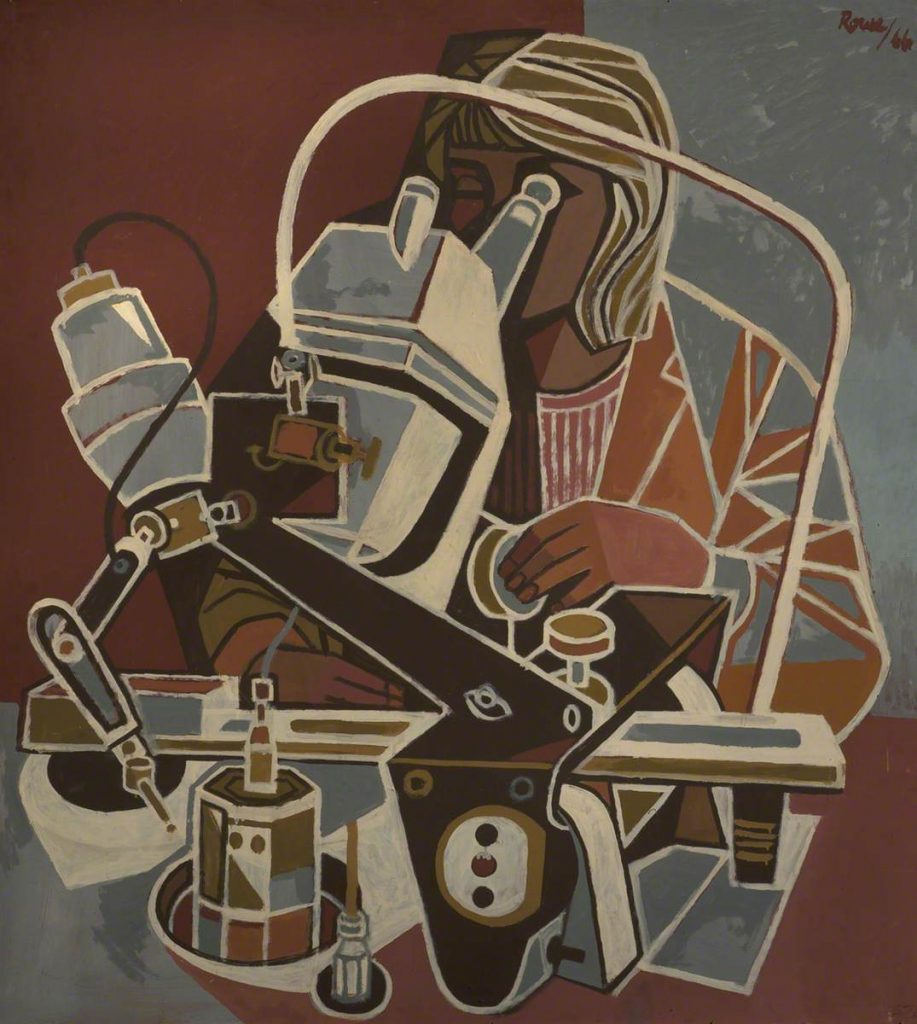
Woman Looking Through a Microscope which was painted in 1966 feels of particular significance as countries around the world race to find a vaccine for Covid-19. When we look closely our eye is first drawn to the composure and calmness that the job in hand is carried out with. Taking in the whole picture you can see this happening amid the pressure of a busy work environment. As the viewer you can feel the weight of the task in hand seemingly more than the worker does. Rowe depicts different kinds of jobs as equally important, awarding the same grace and hard working character to all. For example, Hospital Laundry Workers (date unknown), another painting that resonates with today and the role of key workers, celebrates the working class while also reminding us of why work can be so exhausting.
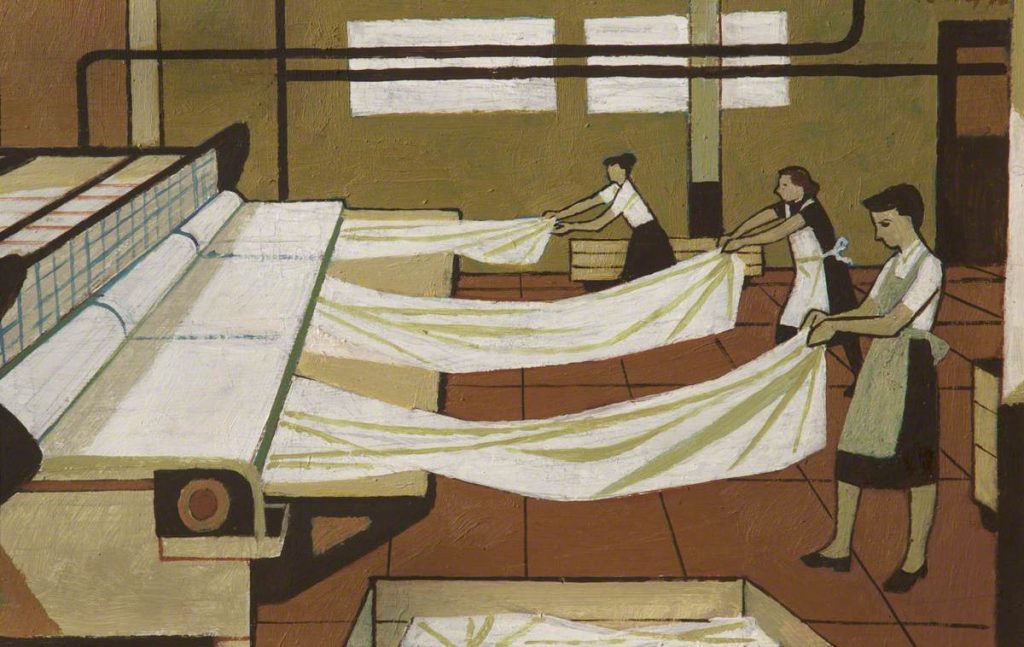
People have been at the forefront of conversations during the Covid-19 pandemic, from front line workers to people ‘doing their bit’ by staying at home, but as we enter another month many people in and out of work are beginning to feel fatigue.
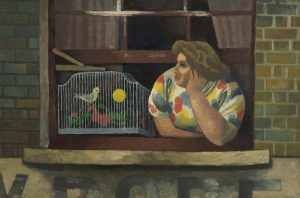
Rowe’s attention to the labouring workforce also extends to their home life. In paintings such as Woman with Birdcage in Window (1931), he depicts people removed from the pressures of the work environment where life appears ground to a halt, almost paused. Many of these paintings represent solitary figures or small groups of people partaking in simple activities. We see for example, a woman staring longingly out of her window, a child playing with a skipping rope or a couple relaxing in the park.
In the current situation the lack of work has been equally exhausting for some people, the weight of financial worries, isolation and lack of purpose can take its toll. We must make sure we are supporting each other as the pressure on our mental health can often be hidden.
Whether we are unable to work, on furlough leave, returning to work or have been working throughout, it is important to take time to talk together about our experiences. Being disconnected from friends, family, colleagues, students and teachers can be isolating, but there will also be many shared experiences that can bring comfort as we head to a ‘new normal’.
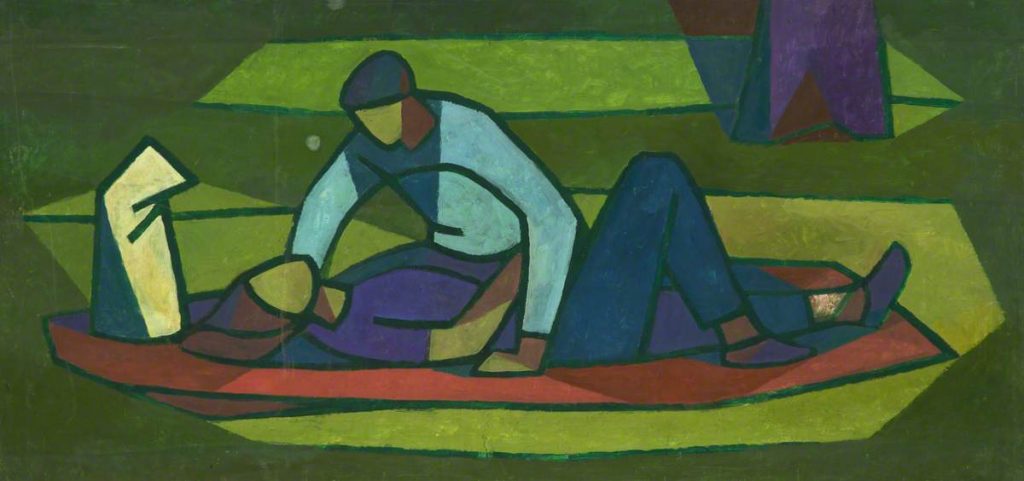
In the painting Man Leaning Over Woman (date unknown), we are presented with a scene that might be familiar to many – a couple relaxing in a park. We can only see their immediate surroundings which give the impression of isolation and yet this could be a busy park beyond the frame. Many people took advantage of their local area at the beginning of lockdown, be it in the city or the countryside, rediscovering old hobbies and spending more time with those in their household. While lockdown measures are starting to relax it is important that we continue to take some time out and be creative to help us to manage the stresses of living in these uncertain times.
Here are some simple communication activities that can help to reduce anxiety. Part of PHM’s Ideas Worth Exploring at home and online offer, we’ve also designed some new activities inspired by Cliff Rowe’s paintings, to encourage you to take time out for yourself, your family and friends.
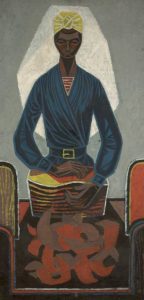
A recurring theme in many of Rowe’s paintings, as in Sorting Tobacco Leaves (date unknown), is the focus on one worker in what is most likely a large scale, busy production line. The block of colour behind their head appears almost like a spotlight, drawing focus to their face rather than the work their hands are doing, making us pay attention to the person rather than the task.
Some of us have been presented with a unique opportunity to slow down and reflect on our old work life balance. The pressure of targets, deadlines and exams can be immense. While we may not be able to change the demand for these, we can make sure we make time for our collective wellbeing. Talking about what is needed to support our mental health – be it finding outlets for creativity, training opportunities, and having support systems in place – could have a really positive and lasting legacy.
Give your friends, family, team or class space to talk about their experiences and how they feel about the current situation. Talking out loud can help people to make sense of many thoughts and feelings.
You may find before starting conversations it helps to convey that you are in a safe space and anything discussed within the activity will stay between those participating and will not be repeated, so individuals feel safe and confident expressing their feelings.
You may also find small groups are less intimidating and each person will need a set amount of time to talk, uninterrupted while everyone else listens.
Encourage talking about:
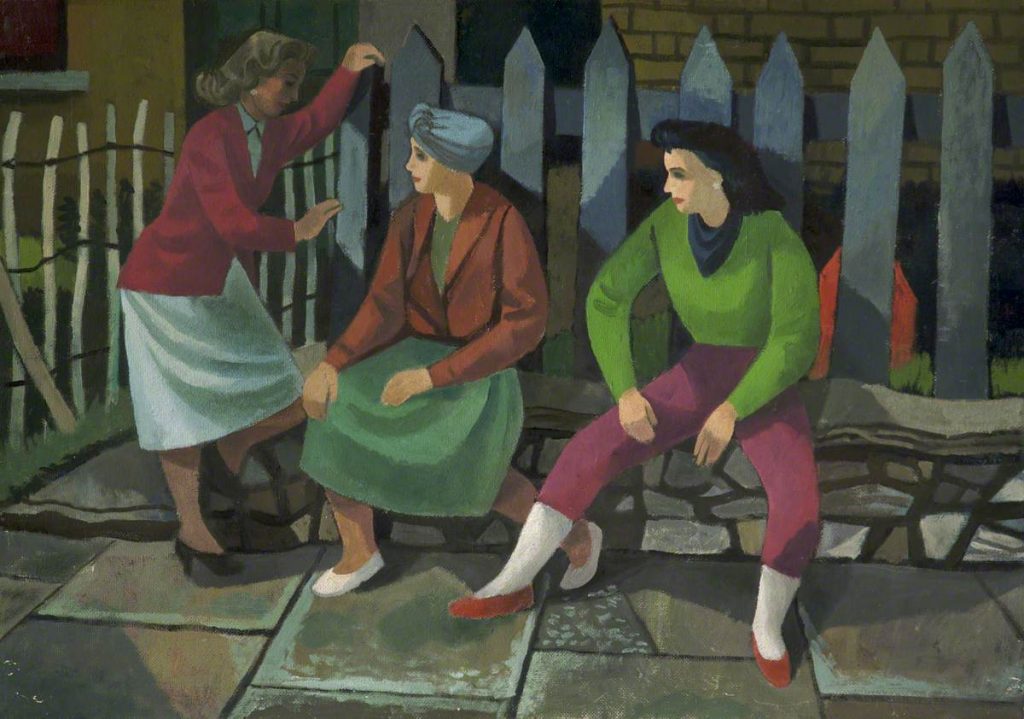
Identifying shared experiences can help bring people together after a long period of absence. It may also help individuals to see that while they have a unique set of circumstances they are not on their own or the only ones to feel a certain way. Identify one end of a shared space as ‘strongly disagree’ and the other end as ‘strongly agree’. For each of the following statements ask your group to place themselves between the two ends in response.
If this is difficult to do while socially distancing, draw a line on a large piece of paper and ask participants to circle on the line where their opinion falls, if possible, using a different colour pen for each statement to separate the answers:
Responses to these statements may prompt further group discussion.
You can see much of PHM’s Cliff Rowe collection on Art UK’s website, the online home for every public art collection in the UK.
Cliff Rowe was a member of the Communist Party of Great Britain, the complete holdings of which are held in the museum’s archive for researchers to view.
We believe that collecting material on events happening now is vital for PHM to tell the continuing story of ideas worth fighting for, including how Covid-19 has impacted experiences of disability and working life. If you have any objects, photographs or videos you think can help us tell this story and build PHM’s collection, please get in touch at collections@phm.org.uk.
Cliff Rowe is one of PHM’s Radicals available for sponsorship. Find out more about how you can Join the Radicals and support People’s History Museum.